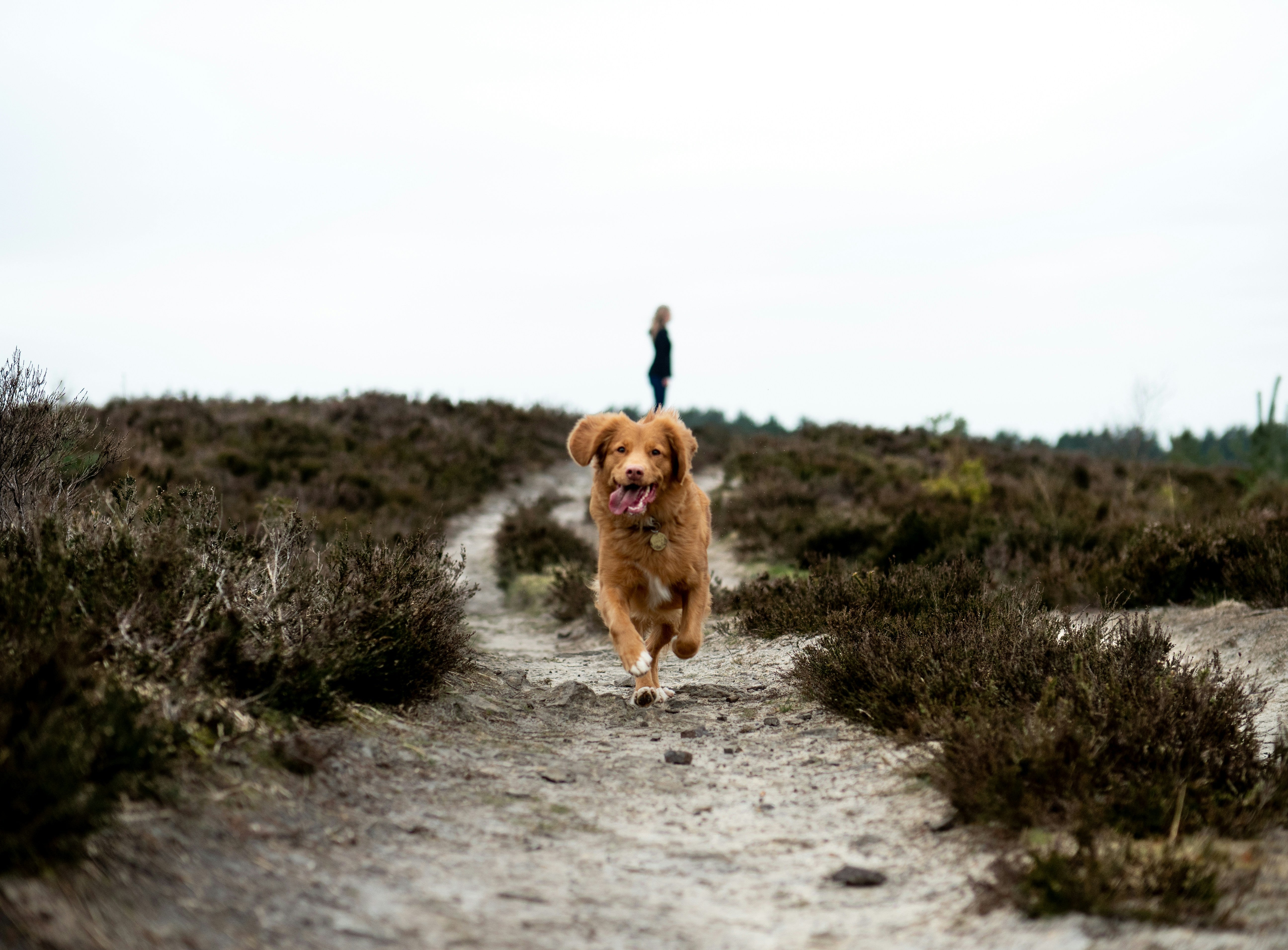
Why Does My Dog Walk Sideways? Tips for Pet Owners

Every dog out there is unique. However, some dogs exhibit behaviors that are so unique their owners start to get concerned. One of these is the tendency to walk at a slight angle instead of walking straight forward.
So, why does my dog walk sideways? Is it a medical problem? Do you need to do something about it? Keep reading to discover the answers to these questions.
The Elements of a Dog’s Walk
Before diving too deeply into why some dogs walk sideways, it is important to understand what makes up a dog’s walk. This means looking at the four types of dog gaits.
- Walk: A walk is the most basic gait and the one you will see your dog do the most often. For this, they lift one foot at a time in sequence, starting with their dominant foot. This means that, as they walk, one foot is almost constantly in the air while three are on the ground.
- Canter: A canter is slightly faster than a walk and may be what your dog does when they want to move quickly from one place inside to another. With this, dogs start with one of their hind feet. Then, they lift the other hind foot and the front foot diagonal from the original hind foot. This is followed by the last front foot.
- Trot: A trot is a little faster than a canter. For this, the feet diagonal from each other will lift up and return to the ground at the same time. With each step, these two feet return to the ground while the other two feet stay suspended. Between steps, all feet are briefly in the air.
- Gallop: This is a full-speed run that dogs will take when trying to go as fast as possible. To gallop, dogs will propel themselves forward on their two front feet, followed shortly by the two hind feet. In a gallop, the pairs of feet launch at nearly the same time, but one foot in each pair will still strike the ground and lift up a moment or two before the other.
Related: Lethargy in Dogs: Recognizing the Signs and Seeking Care
Why Does My Dog Walk Sideways?
The sideways walk some dogs exhibit is called crabbing or sidewinding. It is a condition that impacts many different dogs and that can even develop over time. So, with these specific gaits in use, what causes a dog to crabwalk? The answer comes from some confusion in a dog’s build.
Most dogs who crabwalk have bodies that cause their back legs to disturb the movement of their front ways. To prevent this from happening, they walk to the side in an effort to angle their body and avoid a clash between legs. This lets them avoid tripping but makes their walking patterns awkward.
Since this activity comes from the structure of the dog itself, it is more common in some breeds and some types of dogs than in others. Crabbing is most often seen in:
- Dogs with long legs
- German shepherds
- Border collies
- Pointers
- All types of Spaniels

The Reason Dogs Switch to Walking Sideways
Some dogs don’t start out walking sideways. Instead, they walk normally for years and years. Then, almost as if overnight, they appear to start crabbing. Such a behavior clearly isn’t due to the way they are built, or it would have been present for a long time before that point. So, what causes it?
Is your pet having trouble walking? With the Pet Bedside Sleeper Crate Kit & Stairs, they can walk up to your bed and rest with you easily. Give your pet the boost they need.
Change Due to Injury
Unfortunately, in many cases, it is likely that some injury or affliction is to blame. Dogs suffering from a condition like this may be experiencing some sort of pain when they walk forward normally. So, they shift the way they walk to make themselves more comfortable.
Look out for signs of discomfort that they may be regularly exhibiting. You can also take them to the veterinarian's office to have them checked out.
Some causes of a switch like this include:
- An injury to their legs or hips
- Hip dysplasia
- Vestibular disease
Related: Training Benefits of Walking Your Dog
Change Due to Growth
In other cases, the change in how they walk isn’t due to an injury but simply because of how they are growing.
For example, as young dogs develop, their legs grow longer. This can initially confuse them because they aren’t used to moving around like this. So, they may walk in a different way as they get used to their longer legs. Once again, this is more common in dogs that grow to a large maximum size, as the change from a new puppy to a big dog is a significant one.
In addition, some dogs switch their dominant foot over time. As this impacts their walk, it can throw off their walk for a while. As they get used to the change, their walk will likely return to normal.
Don’t skimp when it comes to your pet’s bedding. With the PupRug by Paw.com™ Faux Fur Orthopedic Dog Bed - Curve White with Brown Accents, you can provide your pet with the ultimate form of comfort.

What to Do If Your Dog Walks Sideways
Most of the time, if your dog walks sideways, there isn’t anything you can or should do. If their walk is a result of their body’s structure, they won’t change the way they walk. This is just something that is innate about your dog, like a part of their personality. So, you should embrace it rather than try to change it.
If it results from their growth, their walk may return to normal on its own. Just wait a while to see how they develop. Even if you try to change what they are doing, there is no guarantee that it will help or that the change you want isn’t just something that will happen naturally.
The only time you should step in is if you think the sideways walking is due to pain or discomfort. In these cases, you should take your dog to the vet to be sure the condition isn’t more serious. Alongside this, you can provide them with more comfortable bedding and do your best to improve other aspects of their life.
Working on Your Dog’s Walk
If your dog walks sideways, you shouldn't get too worried too quickly. First, make sure they aren’t in pain or suffering from some injury. As long as this isn’t the case, you should simply accept the way they walk and avoid any worries about it.
Related: Why Do Dogs Tear Up Their Beds? Unraveling the Mystery
Share this article
written by


